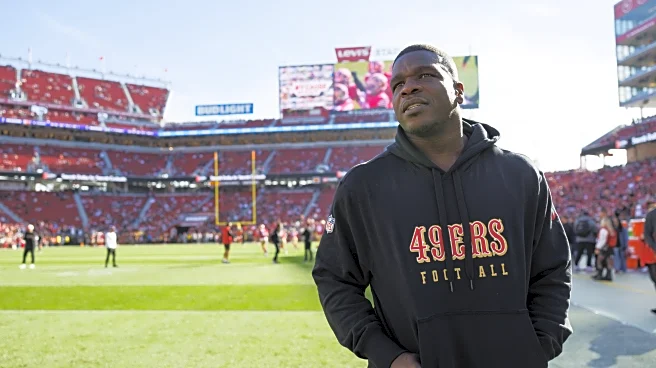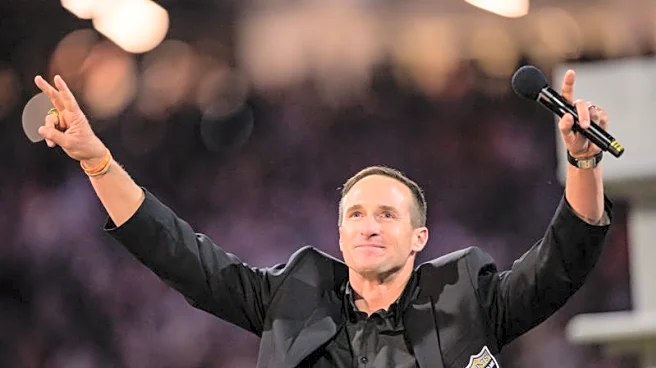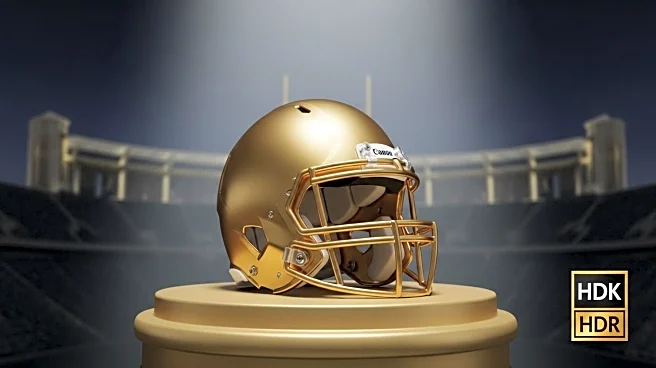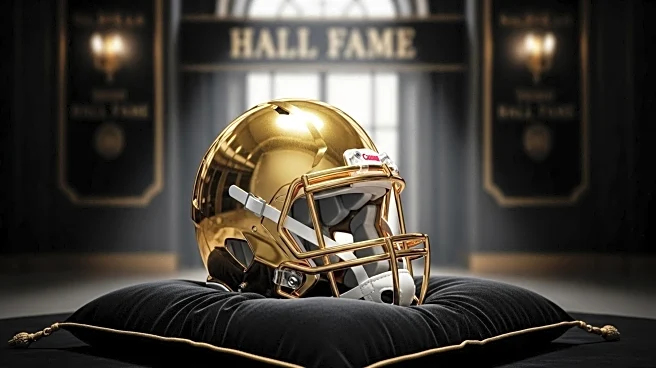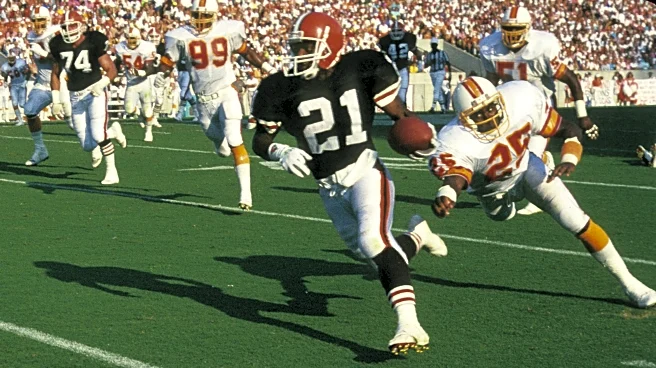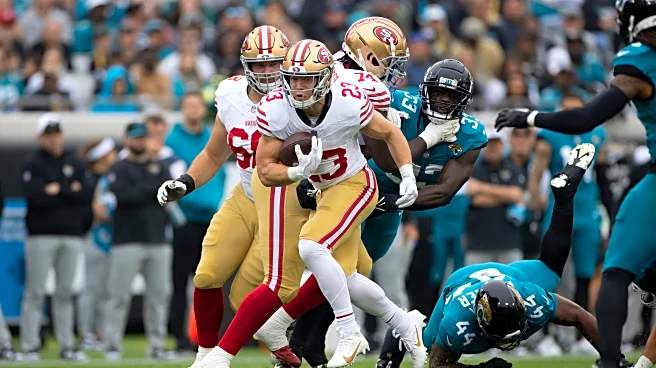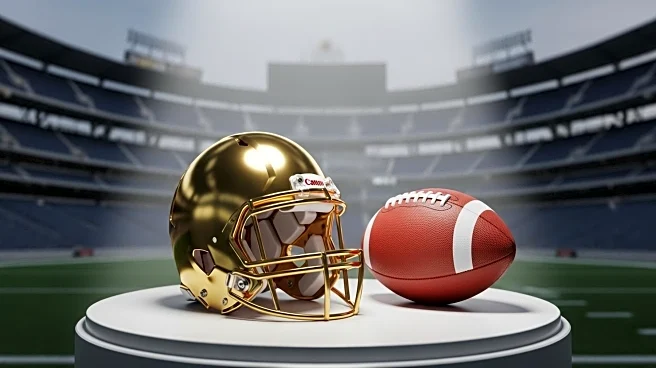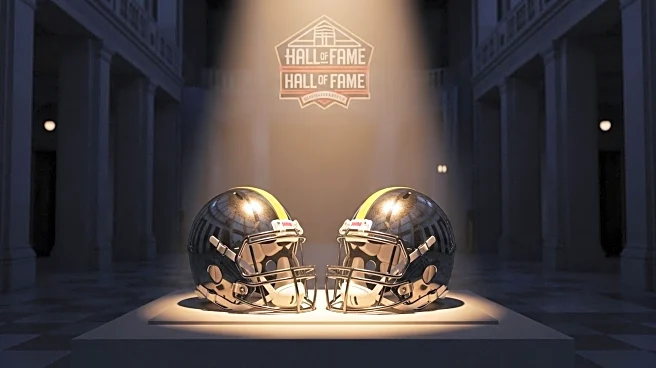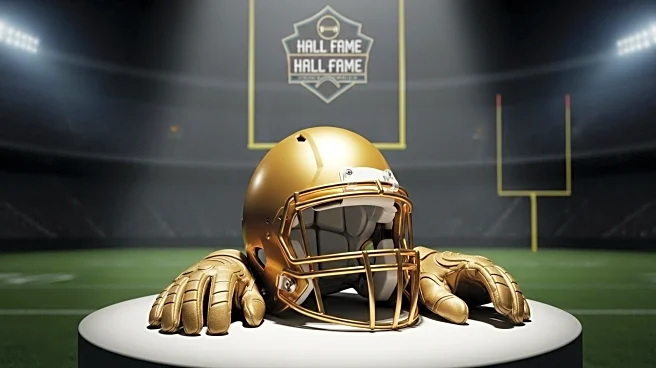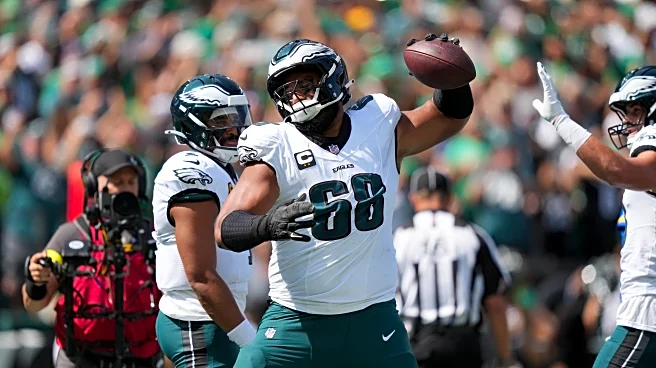The Arizona Cardinals have had their fair share of exceptional receivers over their history: Roy Green, Ricky Proehl, DeAndre Hopkins, Jackie Smith, Anquan Boldin, Pat Tilley, Sonny Randle, Mel Gray, and Frank
Sanders, to name a few.
Oh. And a guy named Larry. Larry Darnell Fitzgerald, Jr., to be exact.
RELATED: LARRY FITZGERALD MAKES IT 10 FOR 10
If you made a list of the best receivers for the franchise, Fitz would be at the very top. And now, his first ballot as a possible inductee into the Pro Football Hall of Fame has come up. He and QB Drew Brees were picked in their first year of eligibility as two of the nominees among modern era players for the 2026 Pro Football Hall of Fame class.
The Cardinals have 23 players in the Hall of Fame and 19 members in their Ring of Honor.
In all, 13 total players were picked from a list of 128. The others are LB Thomas Davis, DTs Jurrell Casey and Geno Atkins, C Maurkice Pouncy and OG David DeCastro, RBs LeSean McCoy and Frank Gore, TEs Jason Witten and Greg Olsen, and QBs Philip Rivers and Alex Smith.
Fitzgerald leads the Cardinals’ franchise history in almost every category. He is #1 in total yards (17,492), targets (2,335), receptions (1.432), and touchdowns (121). He is high up on the list in yards per reception average (12.2) and catch reception percentage (61.3%).
He is considered among the greatest to play the position in a list comprised of Jerry Rice, Don Hutson, Raymond Berry, Fred Biletnikoff, Calvin Johnson, Steve Largent, Randy Moss, Julio Jones, and Lance Alworth.
Arizona finished the 2003 season at 4-12-0, tied with the San Diego Chargers, Oakland Raiders, and the New York Football Giants for the league’s worst record. The four teams were then slotted with San Diego getting the first overall selection, followed by the Raiders, Cardinals, and Giants.
The Chargers chose QB Eli Manning as Oakland took OT Robert Gallery. This put Arizona on the clock. Available were QBs Ben Roethlisberger and Phillip Rivers, defensive backs Sean Taylor and DeAngelo Hall, LB Jonathan Vilma, and a trio of highly-touted receivers in Reggie Williams, Roy Williams, and Fitzgerald.

Calmer heads enabled the Cards to select Fitz, although both quarterbacks on the board would have been helpful. At the time, the signalcallers for the Cardinals were Jeff Blake, Josh McCown, and Preston Parsons. Two seasons later, Kurt Warner would arrive.
Fitzpatrick grew up in Richfield, Minnesota, located less than an hour south of Minneapolis along I-35W. He was an All-State receiver in his junior and senior years at the Academy of Holy Angels High School. He chose the University of Pittsburgh as his next stop.
Pitt played him in his freshman year right off the bat. In just his second college game, he had 10 receptions for 103 yards in a losing effort. For the year, Fitzgerald played in every game with 69 receptions for 1,005 yards and 12 TDs.
In 2003, he busted out.
Again, he played in every game and ran 4.47 in the 40. This time around, after a full season, he was considered the best receiver in the NCAA. He led the Big East in receptions with 92, led the nation in touchdowns with 22, and led the nation in receiving yards with 1,672.

Fitzgerald’s accolades after the 2003 season include First Team All-Big East, Unanimous All-American, and Big East Offensive Player of the Year. He was also the winner of the following honors: Biletnikoff Award, Walter Camp Award, Chic Harley Award, and the Paul Warfield Trophy.
Later, Pitt would retire his #1 jersey. In 2024, Fitz was inducted into the College Football Hall of Fame, and in 2022, he was inducted into the Arizona Sports Hall of Fame.
In his rookie year in the NFL, he played quite a bit, but was getting acclimated to the pro level. He had 780 yards on 58 receptions with eight touchdowns, but was targeted 115 times. The following season, he had 165 targets with 1,409 yards and 10 scores on a league-leading 103 receptions.
In all, Fitzgerald played 17 seasons, all with the Cardinals. He topped over 100 receptions in a season five times, with another three in the 90s. He had nine seasons going over 1,000 receiving yards, with his best year being 2008, in which he had 1,431 yards.
Fitz was named to the Pro Bowl 11 times, First Team All-Pro once (2008), Second Team All-Pro twice (2009, 2011), was the NFL receptions leader twice, the NFL receiving touchdowns leader twice, and voted the Walter Payton Man of the Year in 2016.
RELATED: THE CARDINAL I WOULD LIKE TO MEET: LARRY FITZGERALD
For his career, Fitzgerald had 2,335 targets, 1,432 receptions for 17,492 yards, a 12.2 yards per reception average, scored 121 touchdowns, had 906 first down conversions, and ran the ball 20 times for 68 yards with five first down conversions.
Who can forget Fitzgerald’s 64-yard touchdown catch and run in Super Bowl XLIII against the Pittsburgh Steelers, played in Tampa, Florida, after the 2007 season? It was a simple post route that Fitz caught without breaking stride as he took off in the center of the field, shifted into another gear, and outran everyone. He made the three defenders seem like they were high school kids trying to catch up. Fitz was also the last tackler on the James Harrison full-field interception for a touchdown.
After his career was completed, Fitzgerald was named to the NFL 2010s All-Decade Team and the NFL 100th Anniversary All-Time Team.
Only five players have had their numbers retired in the 127-year history of the Arizona Cardinals: #8 Larry Wilson (1960-1972), #40 Pat Tillman (1998-2001), #77 Stan Mauldin (1946-1948), #88 J.V. Cain (1974-1978), and #99 Marshall Goldberg (1939-1943, 1946-1948).
Editor’s note: Goldberg served in World War II during the missing years
A quick acknowledgment of the players who should have their numbers retired by the organization at some point:
- Larry Fitzgerald #11
- Kurt Warner #13
- Jim Hart #17
- Roger Wehrli #22
- Adrian Wilson #24
This year’s Hall of Fame inductees will be voted on by the selection meeting before the Super Bowl in February.
Brees and Fitzgerald are the top new candidates this year.

